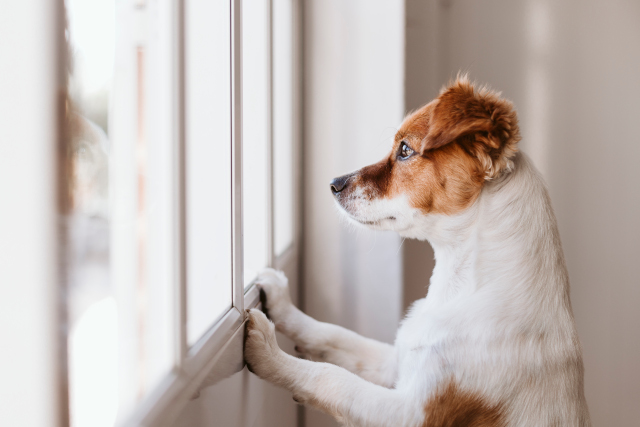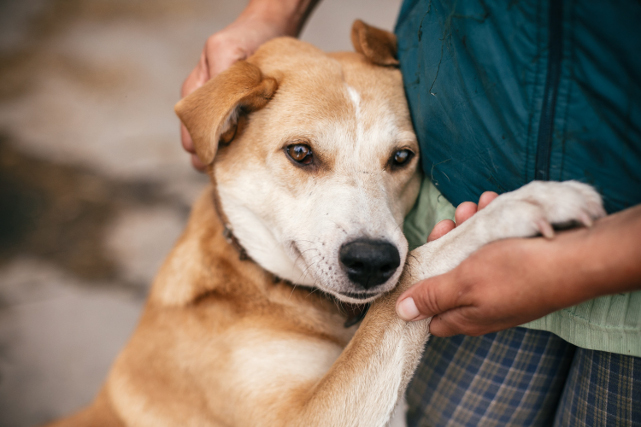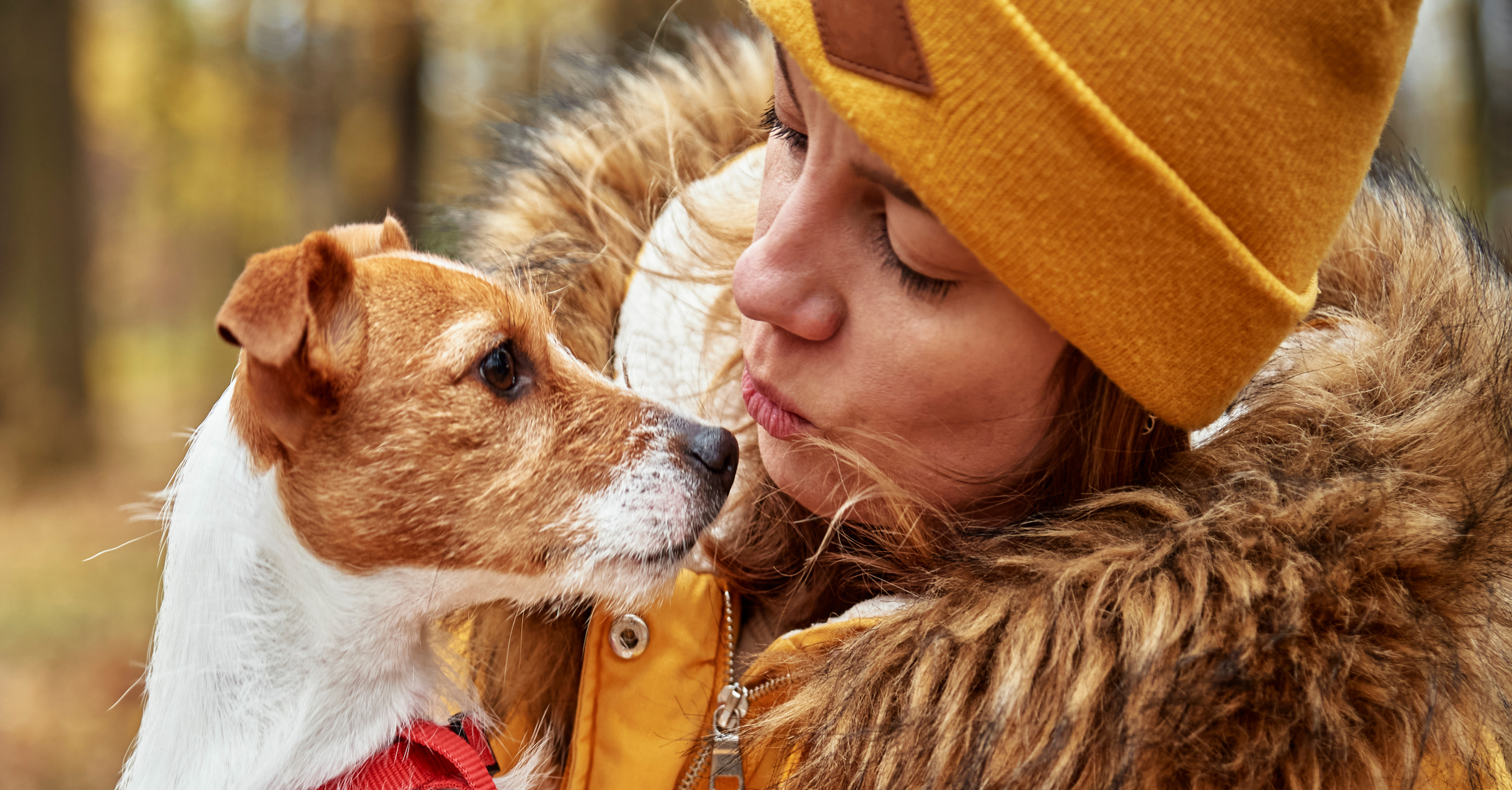Have you noticed your dog struggling when you’re apart from them? Do you hear from friends or family that they’re agitated when you’re not around? Perhaps you notice them getting upset when they realize you’re about to leave, or perhaps they lash out while you’re gone and wreck things in the home.
In any case, separation anxiety in dogs is a very real issue. One newer study has found that it may even be increasing since the pandemic because many dogs have gotten used to having their owners at home all the time.
What does separation anxiety look like in dogs?
There are several (potential) signs of separation anxiety—however, remember that every dog will deal with it in different ways. If you notice any of the following symptoms regularly when you’re apart from or leaving your dog, they could be struggling with separation anxiety:
- Excessive barking or howling
- Anxious behaviours like pacing, whining, or trembling
- Chewing, digging, or scratching at things in the home and destroying them (especially near exits to the home)
- Frequent accidents in the home while you’re away
- Excessive attempts to escape their crate, your home, or other areas of confinement
If you’re noticing your dog struggling with separation anxiety when you’re not around or getting ready to leave the house, it’s time to employ some strategies to help them adjust. Not only will this make it easier to leave your dog with other people or by themselves for short periods, but also it will help your dog to stay calm, happy, and healthy as well. Here are six dos and don’ts when dealing with separation anxiety in dogs.
DO: Use your dog’s crate to help them feel comfortable on their own
When done right, a dog’s crate can be a comforting, safe place, rather than a box or cage. It’s important to take the time throughout your dog’s life to reinforce the idea that a crate is a safe place where they can take some time to be alone. One thing to note, however, is you’ll need to have worked on a positive association with your dog’s crate essentially from the very beginning.
You can help your dog enjoy their crate more by associating it with their favourite things. Fill the crate with your pup’s favourite blankets and toys, and give them a treat in their crate once in a while. Some dogs enjoy the calm security of their crate when left alone, while others might feel confined in there after some time.
While your goal should not be to leave your dog locked in their crate all day, this can be a good interim solution to protect your dog and your home while you help them overcome separation anxiety.
DO: Counter-condition your dog with their favourite treats
Treats and other rewards can be invaluable in helping your dog form more positive associations with being alone. Start small when leaving your anxious dog by themselves, just a few minutes at a time. You can also try giving your dog a treat before you leave to help them form a positive association with you leaving the house.
DO: Ask your vet about helpful resources
Your veterinarian can be a fantastic resource in supporting your dog to overcome separation anxiety. Depending on the severity of the separation anxiety and your dog’s unique temperament, they may recommend calming, anti-anxiety solutions that can help soothe your dog. These are best used particularly in the early stages of training your dog to overcome separation anxiety before it progresses in its severity.
DON’T: Punish your dog for having separation anxiety
Overwhelming research has shown that punishment—whether verbal, physical, or related to privileges and deprivation—is simply not effective at teaching your dog desired behaviours. Dogs typically aren’t complex enough to understand why you’re unhappy with their actions, only that you are.
So rather than punishing your dog for negative behaviour, be kind and patient with them. It’s okay to give your dog a stern ‘no’ if needed, but beyond that, you should be encouraging good behaviour with positive reinforcement, rather than the inverse.
DON’T: Neglect the importance of exercise and stimulation
Exercise isn’t a catch-all fix to separation anxiety in dogs, but it can be a huge help in controlling it! If your dog is full of energy when you leave, they’re more likely to get restless or bored in your absence, leading to separation anxiety and the problems associated with it. A tired, well-exercised dog, on the other hand, will be more likely to settle down, rest, and appreciate the downtime when you leave. So be sure to do as much (age-appropriate) exercise with your dog as possible.
Taking your dog for a walk before you leave the house is one great way to ensure they feel more comfortable at home while you’re away. You can also leave their favourite toys and treat puzzles out so they have something to stimulate their mind and prevent them from getting bored.
DON’T: Encourage clingy behaviour
Dog owners might have more to do with their pup’s separation anxiety than they realize! If you’re in the habit of encouraging clingy or needy behaviour, you shouldn’t be surprised if this continues when you leave the house. It takes some dedication to teach your dog the discipline they need to be independent, but the results are more than worth it.
You can help your dog get better at managing separation anxiety by first leaving them alone in certain rooms in the house. Ensuring your dog understands and follows the ‘stay’ command is essential here, since you can have your dog stay in one room while you go to another for a few minutes. The more you can encourage your dog to be alone in a separate part of the house—even while you’re home—the less likely they are to experience anxiety when they’re separated from you.
While separation anxiety is a very common issue for dogs and their owners to face, it can absolutely be overcome with the right knowledge and approach. And of course, your veterinarian is your best resource in the event your dog’s separation anxiety is showing signs of becoming more severe.
Creative Commons Attribution: Permission is granted to repost this article in its entirety with credit to Hastings Veterinary Hospital and a clickable link back to this page.






